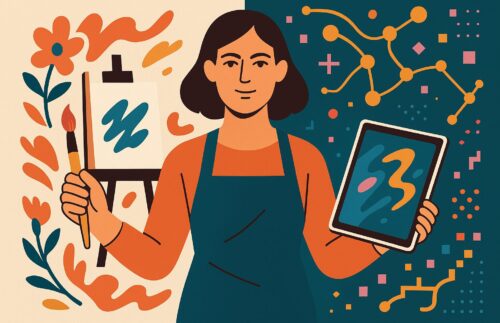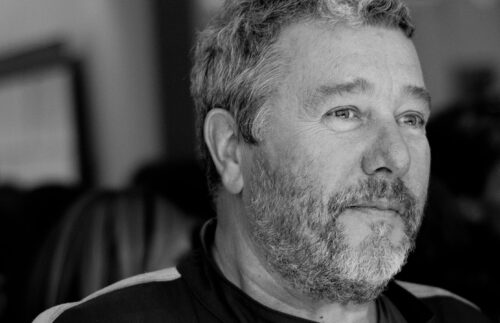In today’s rapidly evolving creative landscape, one of the most exciting shifts is how artificial intelligence is being integrated into the artistic process. This isn’t about machines replacing artists; it’s about artists boldly embracing new tools to push the boundaries of their own practices. And few are doing this as strikingly as David Salle.
Salle, renowned for his postmodern, layered compositions, has recently taken a daring leap into the world of AI. In his latest “New Pastorals” series, he doesn’t simply let the machine generate finished pieces. Instead, he collaborates with AI to create digital images that serve as backdrops — printed onto linen canvases — which then become the foundation for his own painterly interventions. He paints over these AI-generated visuals, adding oil, acrylic, and his signature gestures, transforming the printed machine outputs into fully realized artworks that bear his unmistakable touch.
This kind of bold action by Salle isn’t just a headline grab; it’s a meaningful signal to the art world and to all of us artists experimenting with AI. It shows that integrating AI isn’t about abandoning craft or authenticity. On the contrary, it’s about expanding the creative toolkit, opening up new compositional possibilities, and challenging ourselves to interact with machine-generated material in ways that still require a human eye, hand, and intuition.
What’s especially fascinating is that Salle trains the AI on his own past works and art historical references. This means the machine isn’t spitting out random visual noise; it’s remixing elements within a framework steeped in his own visual language. In doing so, Salle demonstrates that the true power of AI in art lies in its collaborative potential — as a partner, not a rival.
For artists like us, this is both inspiring and instructive. It invites us to think of AI as a co-creator, a tool that can provoke new directions, generate unexpected starting points, and stretch the limits of what we thought we could do. But ultimately, the human element remains at the center. As Salle’s work reminds us, no matter how sophisticated the technology, it takes an artist’s boldness, vision, and hand to turn raw potential into meaningful art.
If you’re exploring ways to integrate AI into your own practice, take heart: artists like David Salle are clearing the path, showing that innovation and tradition can coexist. The future of art isn’t human or machine; it’s human with machine — and that’s where the real magic is happening.








